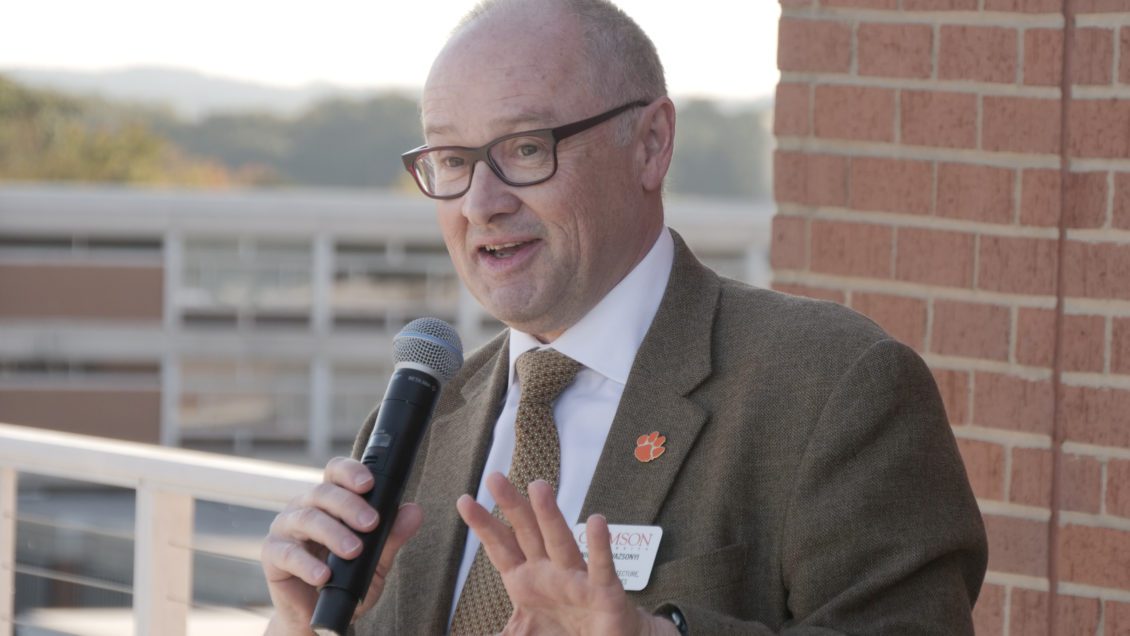Dear Faculty, Staff, Alumni and Friends,
Last month, I joined with an estimated billion people across the globe, watching spellbound as Queen Elizabeth II was laid to rest. There are strong and important opinions on all sides of the debate about whether or not the United Kingdom should have a monarchy. And about what that monarchy has represented and signified over time. These questions are not what I would like to weigh in on in this column.
Rather, what fascinated and moved me was the mere fact of the funeral itself. The ways in which it was choreographed, and the psychological, emotional and seemingly spiritual effect it had on those who participated and watched. No matter what side of the debates one is on, it is hard to deny that impact.
What does all this have to do with the College of Architecture, Arts and Humanities, you ask? Everything. One could almost say, it was an event brought to the world through a combination of architecture, arts and humanities.
The day was framed by architecture. Starting in Westminster Hall, where the Queen lay in state, and then on to Westminster Abbey for the public portion of the funeral service, and then the long procession through London and on to Windsor Castle for the private ceremony and the interment. Each of these buildings was founded approximately one thousand years ago, Windsor Castle being the oldest inhabited castle on this planet. The combined age of these structures: three thousand years. And they carry with them the weight and significance of that history, representing the three pillars of English culture: parliamentary democracy, the Church of England, and the monarchy, or, put differently: the profane, the sacred, and their defender. Architecture communicates all this without uttering a single word.
The day was also an exquisitely conceived amalgam of the sonic and the visual. From the lone bagpiper, walking away and vanishing into the mist, to the bright red tunics of the foot guard and the glistening breastplates and helmets of the horse guards, moving to the slow and unrelenting march of the music, interrupted every minute by the muffled church bell that tolled, out of sync with the music. A shock each time as it marked the inescapable progress of time and the inevitability of death, again without uttering a word.
The day was an enactment of ritual that felt both familiar but also out of step with our world. Not so much an enactment as a re-enactment. The Middle Ages as imagined in the 19th century. Out of step, because we live in a time that has largely disposed of ritual in favor of the new. We have not only dispensed with ritual; we trivialize and mock it. And yet, if the reaction to the event is anything to go by, the hunger on display from the thousands who stood in line for more than a day to view the Queen lying in state, to the many thousands lining the streets during the procession, to the millions watching on screens, it is hard to dismiss the notion that what feeds our emotions and our soul are the symbols, sights and sounds that convey nobility, duty, dignity, tradition, honor, majesty. It was a display of the cumulative power of history, of ethics, of culture, and a reminder of our common aspiration as humans to reach for the divine. It was ultimately about the meaning of life.
Go Tigers!
Nicholas Vazsonyi, Dean
College of Architecture, Arts and Humanities
Follow Dean Vazsonyi on Twitter and Instagram.
Get in touch and we will connect you with the author or another expert.
Or email us at news@clemson.edu

